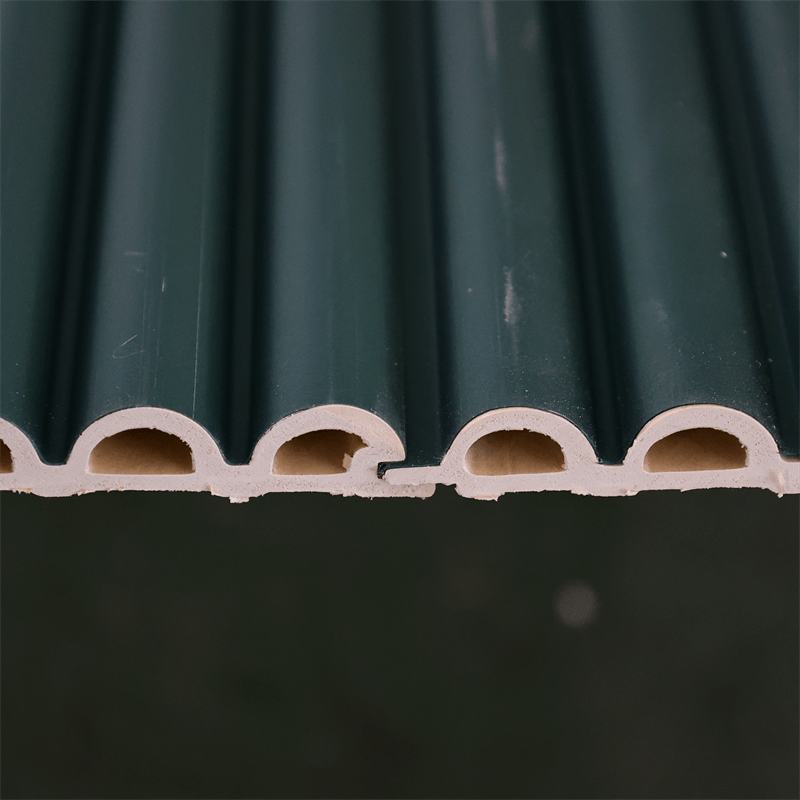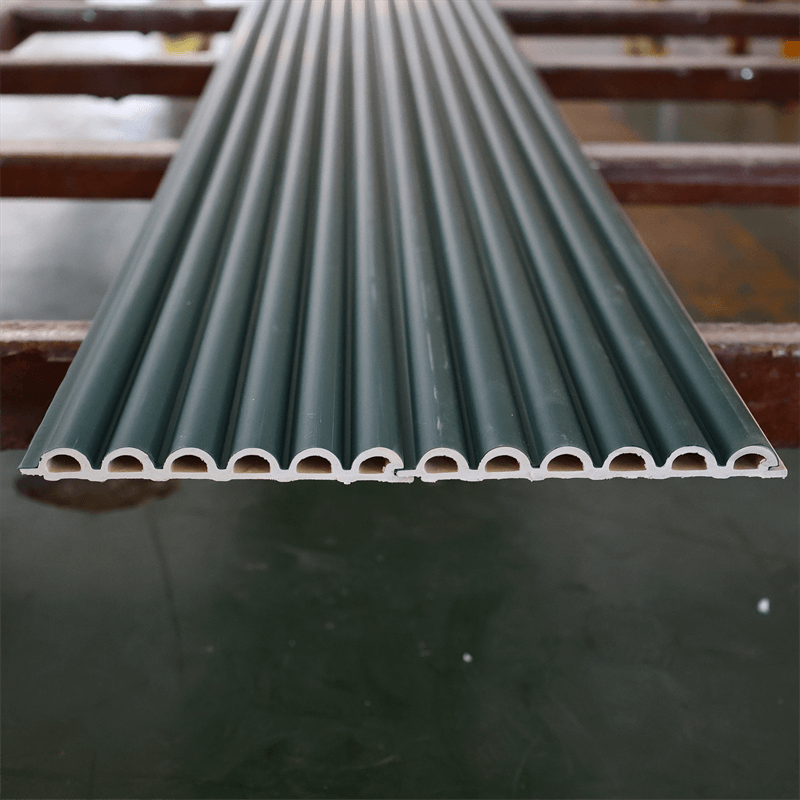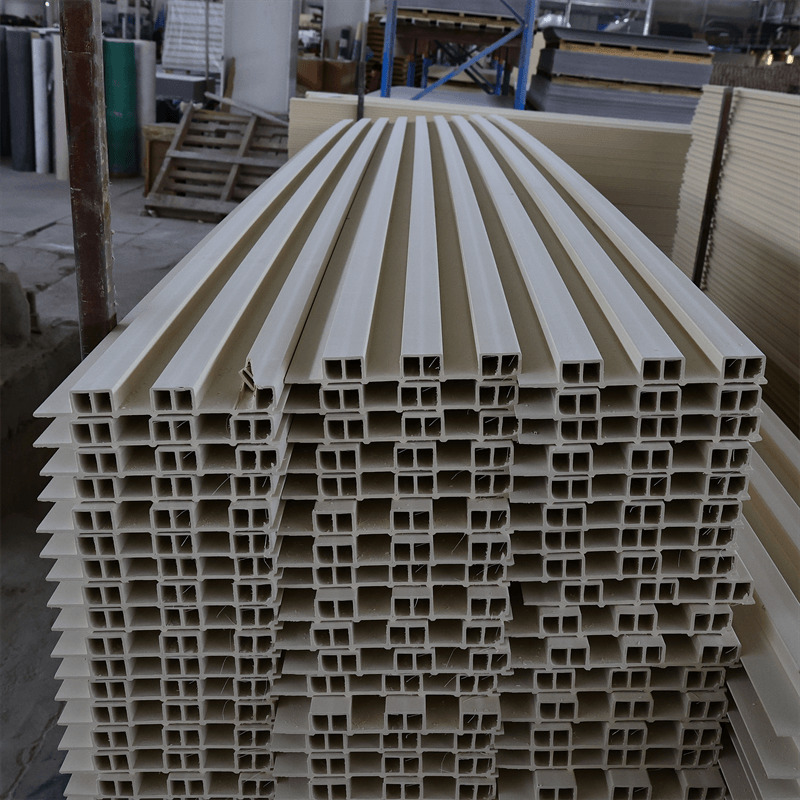
When it comes to interior design, walls are often seen as a blank canvas awaiting creative expression.
While paint and wallpaper have long been the go-to options for adding visual interest,
textured WPC wall panels are revolutionizing the way we approach interior aesthetics.
Wood Plastic Composite (WPC) wall panels with textured surfaces offer an exciting alternative that elevates design possibilities to new heights.
This article delves into the power of textured WPC wall panel designs, explores their versatility in enhancing aesthetics, discusses the sensory experiences they create,
and provides valuable tips for incorporating textured WPC wall panels to unleash creativity in interior spaces.
The Limitless Canvas: Exploring the Power of Textured WPC Wall Panels
Walls are an integral part of any interior space, and designers are continually seeking ways to make them more than mere boundaries.
Textured WPC wall panels provide a limitless canvas for creative expression, infusing interiors with dimension, depth, and tactile appeal.
These panels break away from the conventional flat surface, allowing designers to experiment with various textures, patterns, and three-dimensional effects.
Textured WPC wall panels come in a myriad of options, ranging from organic wood grains and faux brick patterns to intricate 3D designs.
They offer a unique opportunity to add character and personality to interior spaces, turning walls into captivating works of art that evoke emotions and engage the senses.

Elevating Aesthetics: The Versatility of Textured WPC Wall Panel Designs
The versatility of textured WPC wall panel designs knows no bounds.
They can be seamlessly integrated into various interior styles, from contemporary and industrial to rustic and traditional.
Here are some ways textured WPC wall panels elevate interior aesthetics:
Organic Elegance: Textured WPC wall panels with organic wood grains exude natural elegance,
bringing the warmth and beauty of wood into interior spaces without compromising on sustainability.
Industrial Chic: Faux concrete or weathered metal textures create an industrial-inspired ambiance, adding a touch of urban chic to modern interiors.
Timeless Charm: Faux brick and stone textures evoke a sense of rustic charm and timeless appeal, giving interiors a cozy and nostalgic feel.
Abstract Artistry: Intricate 3D designs and abstract patterns serve as statement pieces, transforming walls into art installations that become the focal point of the room.
Luxurious Opulence: Textured WPC wall panels with intricate designs, like damask or filigree patterns, add a touch of opulence and sophistication to high-end interiors.
Creating Sensory Experiences: The Impact of Texture on Interior Spaces
Texture plays a profound role in shaping our sensory experiences within interior spaces.
Smooth, flat walls may offer visual appeal, but textured WPC wall panels take the experience to a whole new level.
The tactile nature of these panels engages the sense of touch,
allowing occupants to interact with the walls in a way that traditional surfaces cannot replicate.
Textured WPC wall panels have the power to evoke emotions and create a multisensory experience.
Rough textures may elicit a sense of coziness and comfort, while sleek and glossy surfaces may exude modernity and sophistication.
By incorporating a variety of textures throughout the space, designers can orchestrate a symphony of sensations,
heightening the overall ambiance and making interiors more immersive and inviting.

Designing with Depth: Tips for Incorporating Textured WPC Wall Panels
Integrating textured WPC wall panels into interior design requires thoughtful planning and execution.
Here are some tips for designing with depth and incorporating textured WPC wall panels effectively:
Focal Point: Use textured WPC wall panels as a focal point in the room.
Select a prominent wall or an area that draws attention to showcase the unique texture and make it the centerpiece of the design.
Complementary Balance: Balance textured walls with smoother surfaces to avoid overwhelming the space.
A blend of textures creates a harmonious and visually appealing interior.
Accent Walls: Consider using textured WPC wall panels to create accent walls.
An accent wall with textured panels can add drama and visual interest without overpowering the entire room.
Lighting Matters: Play with lighting to accentuate the texture of the panels.
Wall-mounted or recessed lighting can cast shadows and highlights, enhancing the three-dimensional effect.
Multifunctional Spaces: In areas with specific functions, such as the dining room or study,
textured WPC wall panels can add a layer of distinction and create a unique ambiance that complements the room’s purpose.
Gradual Transition: When combining different textures, ensure a smooth and gradual transition between them.
The flow between textured and non-textured surfaces should be visually cohesive.
Textured WPC wall panels present an exciting opportunity to go beyond traditional paint and wallpaper,
unleashing creativity and elevating interior design to new heights.
With their limitless potential and versatility, these panels offer a diverse range of aesthetic possibilities, from organic elegance to industrial chic.
The sensory experiences they create engage not just the eyes but also the sense of touch, making interiors more immersive and inviting.
By thoughtfully incorporating textured WPC wall panels, designers can transform walls into captivating canvases that tell stories and evoke emotions.
As the world of interior design continues to evolve, textured WPC wall panels stand as a testament to the boundless
possibilities of creative expression and the impact of texture on shaping unforgettable spaces.
